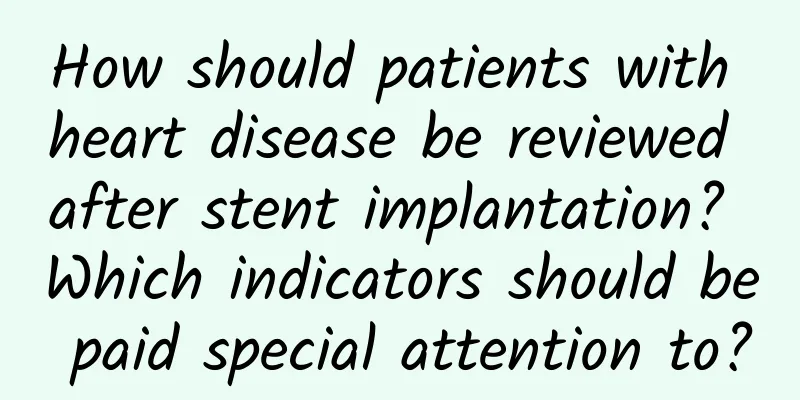How should patients with heart disease be reviewed after stent implantation? Which indicators should be paid special attention to?

|
After a heart stent is implanted, the biggest fear is side effects. How to detect the side effects of the stent in a timely manner and regular checkups are the key . But you will find that every time you go to the hospital for a follow-up checkup, the doctor prescribes a variety of tests, which vary greatly from patient to patient. Some require blood draws, some ultrasounds, and some even require follow-up angiography! How should you follow up after a heart disease stent? What indicators should you focus on? Let's take a look: 1. Blood test Routine blood test: Long-term use of antiplatelet drugs after stenting may cause gastrointestinal bleeding, which is also one of the most common side effects. Regularly reviewing routine blood tests and monitoring whether there is an abnormal decrease in hemoglobin can promptly detect the possibility of gastrointestinal bleeding. For patients with gastric diseases, it is also very important to observe whether there is black stool, bloody stool, and monitor fecal occult blood . Liver and kidney function: Oral heart disease medications are almost all metabolized by the liver and kidneys. If you take a lot of medications for a long time, if the burden on the liver and kidneys is exceeded, it may cause liver and kidney dysfunction, or even liver and kidney failure, especially in the elderly, low-weight patients, and patients with underlying liver and kidney diseases. Therefore, it is necessary to regularly check liver and kidney function, and adjust medication treatment in a timely manner if abnormalities are found. In addition, after stent surgery, blood lipids and blood sugar should be strictly controlled to reduce the risk of recurrence of heart disease. 2. Large-scale inspection Cardiac ultrasound: For patients with acute myocardial infarction and heart failure, regular cardiac ultrasound examinations can assess the extent of heart damage and changes in heart function. Chest CT: When heart disease needs to be differentiated from lung disease, such as pneumonia, pleural effusion, and chronic obstructive pulmonary disease, chest CT can assist in diagnosis. However, ultrasound and CT are not routine review items, and doctors will conduct examinations based on the patient's condition. 3. Cardiac angiography There is no strict requirement for annual cardiac angiography after stenting, but it is recommended if the patient falls into the following situations: Those who have recurrence of symptoms after stenting, those with untreated critical lesions who choose conservative drug treatment, those who receive new technology treatments such as drug-eluting balloons or absorbable stents, etc. IV. Other special inspections Myocardial radionuclide examination: It is used to evaluate the degree of myocardial ischemia and survival, especially occlusive lesions. It has certain guiding significance in guiding doctors whether to perform stent surgery to open blood vessels, but it is not a routine examination. I am Dr. Zhang from the Department of Cardiology. If you like my popular science articles, please like them! You can also share them with friends in need! Follow me to see more health knowledge about heart disease! |
<<: Night Listening|Is it OK to skip breakfast?
>>: Tumor markers elevated? Don’t panic! Here’s the truth!
Recommend
My aunt has a headache
The few days when menstruation comes are when eve...
A woman dreams of losing her lower teeth
Women's thoughts are generally more sensitive...
What are the causes of back pain after uterine curettage?
Uterine curettage is the method chosen by more an...
Why do my farts smell so bad after pregnancy?
In the early stages of pregnancy, pregnant women ...
Counterpoint Research: Global smartphone revenue fell 8% year-on-year in Q2 2023, and Apple earned 85% of global smartphone profits
Apple earns 85% of the world's smartphone pro...
How long after the curettage can I have sex?
Diagnostic curettage is also called curettage. It...
How long does it take for cervical erosion to heal?
Cervical erosion is a relatively common gynecolog...
What are the techniques for applying mascara?
Once, when I met a female friend, I was startled....
How should abnormal follicular development be treated?
Many women will experience symptoms of infertilit...
What should girls do if they suffer from lumbar muscle strain?
The reasons for lumbar muscle strain in different...
What is the reason for wanting to urinate after sex?
Many women often feel the urge to urinate after h...
I'm trying hard to put eye drops in, so why are my eyes still dry?
When eye discomfort occurs Some people choose to ...
What to do about dysmenorrhea and backache
We all know that women's bodies are very unco...









